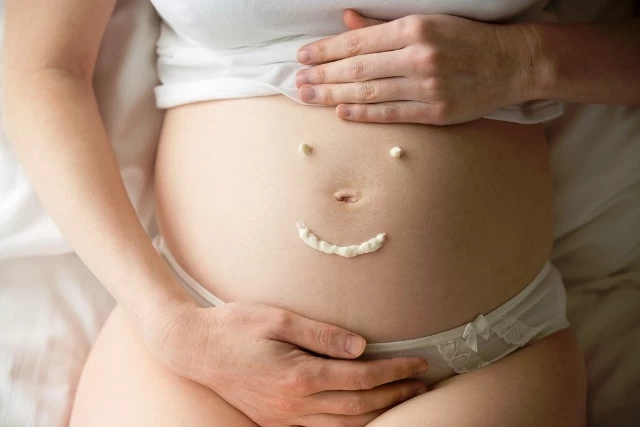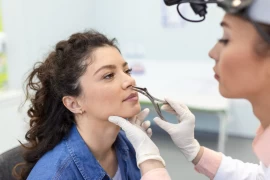
Postpartum Aesthetics
- Postpartum Aesthetics
- What is Postpartum Aesthetics?
- Why is Combining These Procedures Preferable and Advantages?
- Who is a Candidate for Postpartum Aesthetics?
- What Procedures Are Performed in Postpartum Aesthetics?
- Preoperative Considerations
- Is Anesthesia Required for This Surgery and How Long Does It Take?
- Is There Pain Associated with These Procedures?
- What is the Postoperative Recovery Process?
- How Does Postoperative Nutrition Work?
- Are There Significant Risks in this Surgery?
- Are the Results of This Surgery Permanent?
- Can One Become Pregnant After Undergoing Such Surgery?
- What are the Advantages of This Surgery?
What is Postpartum Aesthetics?
Postpartum Aesthetics, essentially a combined operation, aims to address issues in the breast, abdomen, waist, and back regions, ideally in a single surgery. This procedure is referred to as torsoplasty. The term ‘Postpartum Aesthetics' has been coined due to problems arising in these areas, often in connection with childbirth. Additionally, excessive weight fluctuations can also contribute to problems in these areas.
Why is Combining These Procedures Preferable and Advantages?
An individual's body consists of an aesthetic harmony between the breasts, abdomen, back, waist, and hips. While a single area may have issues, often problems occur simultaneously in the breast, abdomen, and waist regions. Fixing the aesthetic appearance of just one area may not bring complete satisfaction, as issues in other areas would persist. When the aesthetic appearance of all these regions is addressed together, the patient achieves the desired result in a single operation. Furthermore, breasts and abdomen are interconnected. Postpartum Aestheticstypically involve addressing issues in the breast, abdomen, waist, and back regions through a unified operation. Moreover, a woman who had a previously attractive body shape may become unhappy due to deformations during pregnancy. Knowing that she can regain her former appearance in one step brings happiness to everyone.
Who is a Candidate for Postpartum Aesthetics?
After childbirth or significant weight changes, those experiencing issues like sagging, stretch marks, and outward bulging in the abdominal area may consider an abdominoplasty procedure. Similarly, individuals with sagging or excessive reduction in breast size due to significant breast growth can explore breast aesthetic options. In addition, those struggling with stubborn fat deposits in the waist and back regions may consider solutions like liposuction.
What Procedures Are Performed in Postpartum Aesthetics?
In fact, the approach is tailored to the patient and their specific concerns. If there is enlargement and sagging in the breasts, breast reduction and uplift procedures can be performed. If there is sufficient breast tissue but sagging has occurred, breast lift with or without implants can be considered. For sagging, looseness, and stretch marks on the abdomen, full or mini abdominoplasty can be performed. Liposuction can be added if there is localized fat in areas such as the upper abdomen, waist, and back. In cases of volume loss and sagging in the hip area, fat harvested from elsewhere can be injected into the buttocks for a buttock augmentation procedure.
Preoperative Considerations
As with most surgeries, smoking should be discontinued at least 3-4 weeks before the procedure. Except for paracetamol, other pain relievers should be avoided. If the patient is using blood thinners, they should be stopped a week before the surgery. Starting 4-5 days before the surgery, foods that cause gas or constipation should be avoided, and a high-fiber diet is recommended. Since breast surgery will also be performed, an evaluation is carried out using mammograms and breast ultrasounds. Ideally, the patient should have lost excess weight and be closer to their ideal weight. High body mass index (BMI) individuals face increased risks during surgery and anesthesia and may also struggle to achieve optimal aesthetic outcomes.
Is Anesthesia Required for This Surgery and How Long Does It Take?
The surgery is performed under general anesthesia and typically lasts between 4 to 6 hours, depending on the specific procedures. The surgery should not exceed 6 hours due to the increased risk of embolism.
Is There Pain Associated with These Procedures?
Due to the use of potent analgesics during and after the surgery, pain is generally well managed. Many patients report not even realizing that breast surgery was performed. While some tightness and discomfort may be felt in the abdomen during the initial few days, the prescribed pain relief is usually sufficient. The pain is not typically intense, akin to that of a bone fracture.

What is the Postoperative Recovery Process?
At the end of the surgery, the incisions are closed with waterproof strips and a compression garment is worn. A urinary catheter is inserted, and drains are placed at the surgical sites. Compression stockings are also worn. The patient is allowed to eat a meal four hours after the surgery and is encouraged to walk afterwards. The urinary catheter is removed the next morning. If the drainage is minimal, the drains may be removed as well. If present, breast area drains are usually removed the day after surgery, while abdominal drains may be kept for a few days. A patient can take a shower a day after drain removal. As the sutures are closed with specialized adhesive strips, dressing changes are not necessary. Since the stitches are placed under the skin and are absorbable, there is no need to worry about stitch removal stress. The patient can start lying on their side the day after the surgery. One week after the procedure, they can return to their daily activities and social engagements. For the first month, activities that strain the arms and abdomen, such as heavy lifting, carrying children, and intense sports, should be avoided. Gentle exercises like walking can be started after two weeks, while more intense exercises like sit-ups, squats, and reformer should be delayed until at least 6 weeks post-surgery to prevent bleeding and swelling at the surgical sites.
How Does Postoperative Nutrition Work?
No strict diet is recommended for the first ten days; however, foods that cause gas or constipation should be avoided. After one month, attention should be paid to diet and avoiding weight gain. Engaging in physical activity, preferably exercise, is advised for long-lasting results.
Are There Significant Risks in this Surgery?
Just like any surgery, there are risks associated with anesthesia and the surgical procedure. These risks may include bleeding, infection, embolism, wound dehiscence, delayed and problematic wound healing, as well as swelling and edema. Therefore, proper evaluation and discussion of risks are crucial, especially for older patients and those with uncontrolled diabetes or high blood pressure. Individuals with excessive weight should focus on weight loss first. Blood sugar and blood pressure should be managed.
Are the Results of This Surgery Permanent?
This surgery involves body contouring and the removal of excess tissue, making the results generally permanent. However, it is essential for the patient not to become complacent after the surgery, avoiding overeating and excessive alcohol consumption to maintain lasting results.
Can One Become Pregnant After Undergoing Such Surgery?
Certainly, there is no prohibition on pregnancy. However, due to the possibility of sagging in the abdomen and breasts, it may not be desired. If a person becomes pregnant and gives birth, the same procedures and corrections can be performed again.
What are the Advantages of This Surgery?
Since issues in the breast, abdomen, back, and waist areas are addressed holistically, the patient achieves their desired appearance in one step. Only one postoperative recovery period is experienced, and all concerns are resolved with a single surgical procedure, alleviating the stress associated with multiple surgeries.






